also known as Robinson’s High Place
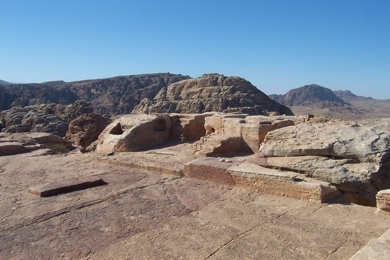
The High Place is located at the very top of a mountain. If you want to see it, you will have to climb up there.
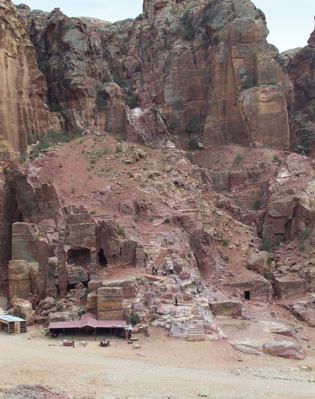
The main steps to the high place start just before the amphitheater. The picture on the right is looking down onto the tent beside the stairs. People are starting up the stairs for the assent to the High Place. Everyone seems to have a different count but the general consensus is that it is over eight hundred. If you are adventurous you can always take a donkey ride, but watch those corners! Below: Your destination 700 steps up the mountain!
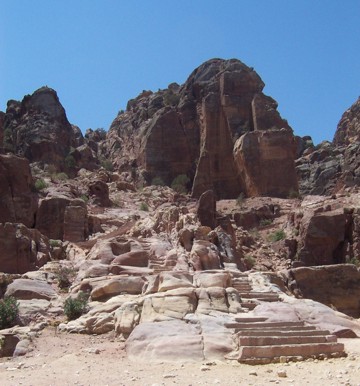
As you climb the steps take some time to look around. Near the bottom of the stairs there appears to be some exposure platforms. Farther up the stairs, one can trace where the ancient stairs and processional path must have gone. As you walk imagine what it must have been like to have been in an ancient procession with colorful priests, musical instruments, and animals bearing the wood to burn the offering. One thing is for sure, incense was probably part of the ancient form of worship.
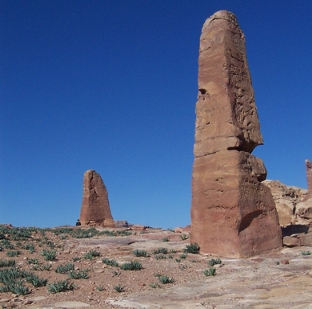
Obelisk near the mountain top. As you reach the top of the mountain you will come to what is known as Attuf Ridge. On this ridge are two obelisks, such as are found in India.
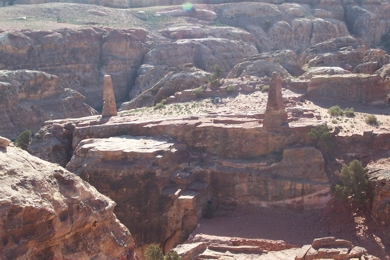
They are carved out of solid rock and are over 6 meters high. They have been noted as Nabataean as one of them still has the typical Nabataean style of haching (etching) on the side that is protected from the prevailing winds. The picture on the right is taken from higher up looking down at the two obelisks. Notice how the mountain has been cleared away and a flat surface surrounds the obelisks.
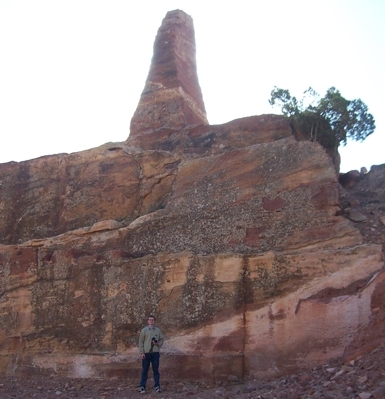
As you reach the top of the mountain you will come to what is known as Attuf Ridge. On this ridge are two obelisks, such as are found in India. They are carved out of solid rock and are over 6 meters high. They have been noted as Nabataean as one of them still has the typical Nabataean style of haching (etching) on the side that is protected from the prevailing winds. The picture on the right is taken from higher up looking down at the two obelisks. Notice how the mountain has been cleared away and a flat surface surrounds the obelisks.
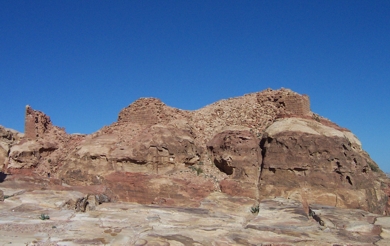
The Crusader Fort On the north side of the Attuf Ridge is a huge pile of stones and the remains of an ancient wall. This is all that remains of an crusader castle. Often, as I have climbed through these ruins to continue up to the high place, I have wondered where the crusaders got all their stones from.
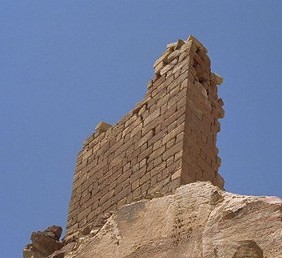
Most certainly the building blocks came from the Attuf Ridge where the Nabataeans carved away the mountain side to make the Obelisks. But one does wonder what the Nabataeans used the stones for. What temple or structure stood on this site, and afforded the crusaders so many wonderful stones to build their fortress with?
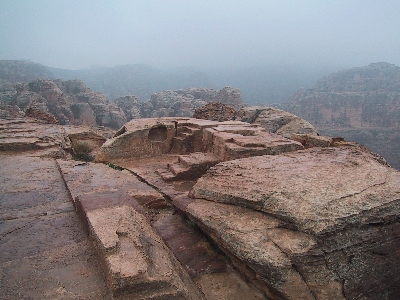
Some people find the high place disappointing, while others find it delighting. A lot depends on how much you know about ancient worship. This high place has a large pool where rain water was collected and available for the priests. In front of the alter was a large open court (14.4 X 6.4 meters) with a strange ridge in the middle where something must have stood. Against the cliff are two alters. (Seen on the left. Yes, it does rain in Petra!)

The alter on the far side may have been used for blood. As animals were sacrificed the blood was drained onto this altar. It appears to have run around the outside of the altar and then down the mountain.

The main alter was for the burnt sacrifice. It contains several small steps and a niche where the fire could have been used. However, there are no evidences of fire at their altar or the other altars around Petra. Built into the two altars are wash basins.
Were there ever human sacrifices at Petra? There is no hard evidence but there is a Nabataean inscription at Meda’in Saleh which reads “abd-Wadd, priest of Eadd, and his son Salim, and Zayd-Wadd, have consecrated the young man Salim to be immolated to Dhu Gabat

The god Al Uzza is also known to have received the sacrifice of boys and girls. In particular, the pagan philosopher Porphyrius states that once a year a boy's throat was sacrificially cut at the oasis of Dumat some two hundred miles from Petra.

When we first visited this site in 1980 with American researcher and author Bob Boyd (Baal Worship in Old Testament Days, Vernon Martin, Lancaster Penna, 1966) he explained to us his theory that the blood needed to reach the mouth of the Lion Monument farther down the mountain, before the sacrifice was acceptable.
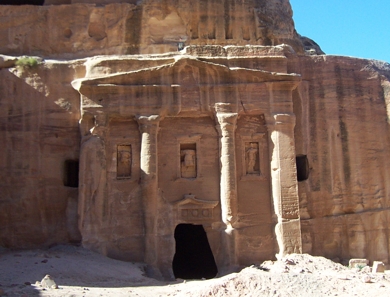
The Soldiers Tomb.
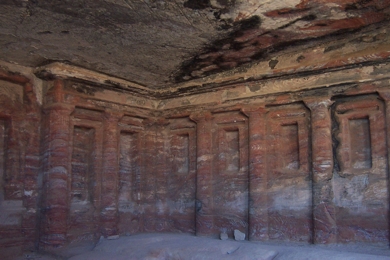
Across from the Soldiers Tomb is a very ornate dinning room.
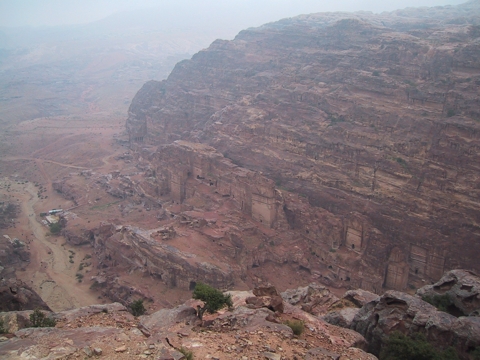
Even on a rainy day, the view from the high place, down on the Royal Tombs is spectacular.

On the way down the mountain, you pass a number of important tombs. Note the color in the rocks as you come down to the Garden Tomb. To the right of this tomb was a large dam that provided water for an ancient garden that decorated the front of this monument.
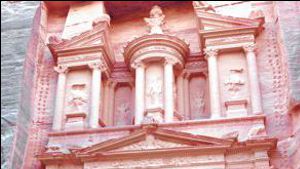
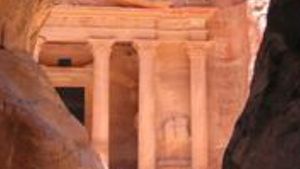
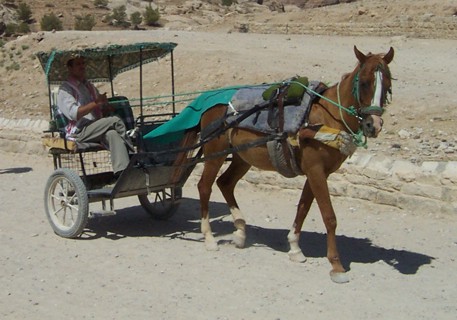
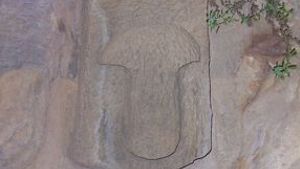
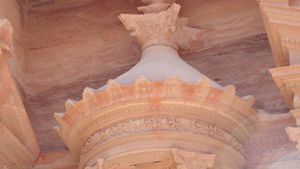

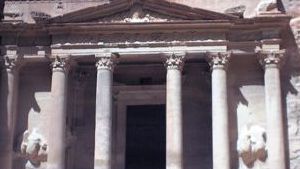

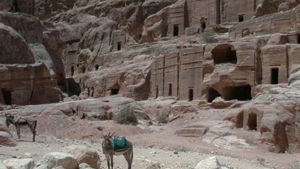

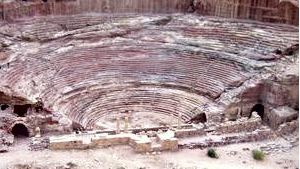
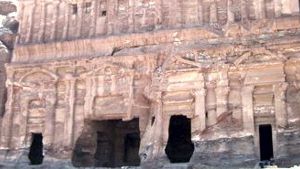
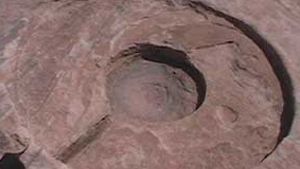

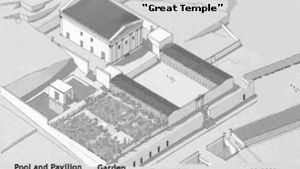
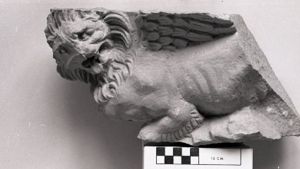
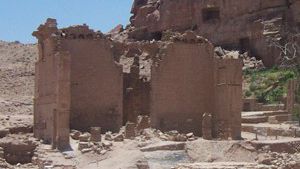
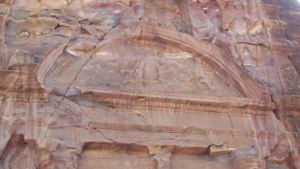
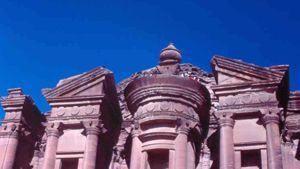
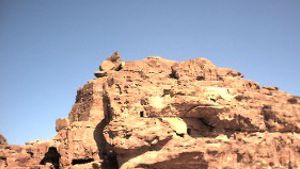

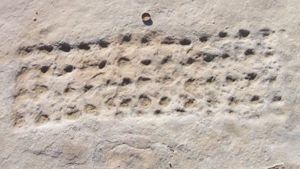
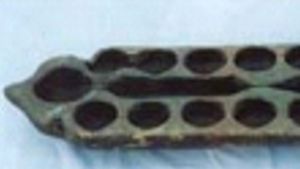

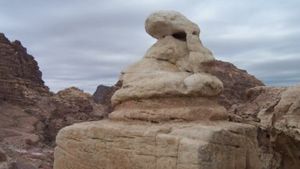
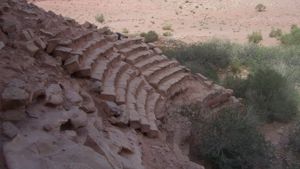
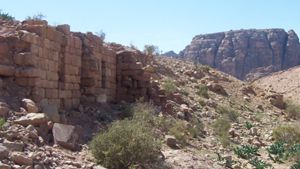

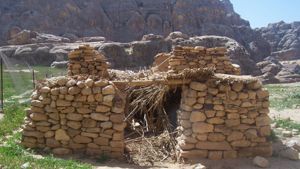
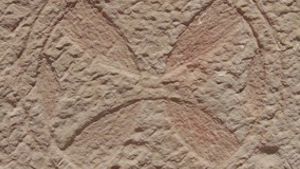
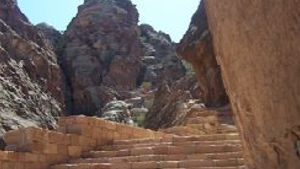
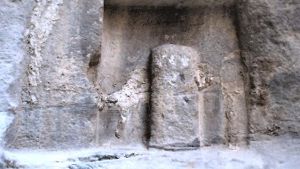
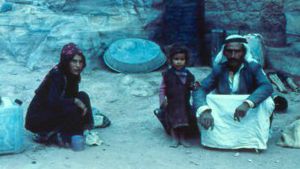
Page Discussion
Membership is required to comment. Membership is free of charge and available to everyone over the age of 16. Just click SignUp, or make a comment below. You will need a user name and a password. The system will automatically send a code to your email address. It should arrive in a few minutes. Enter the code, and you are finished.
Members who post adverts or use inappropriate language or make disrespectful comments will have their membership removed and be barred from the site. By becoming a member you agree to our Terms of Use and our Privacy, Cookies & Ad Policies. Remember that we will never, under any circumstances, sell or give your email address or private information to anyone unless required by law. Please keep your comments on topic. Thanks!